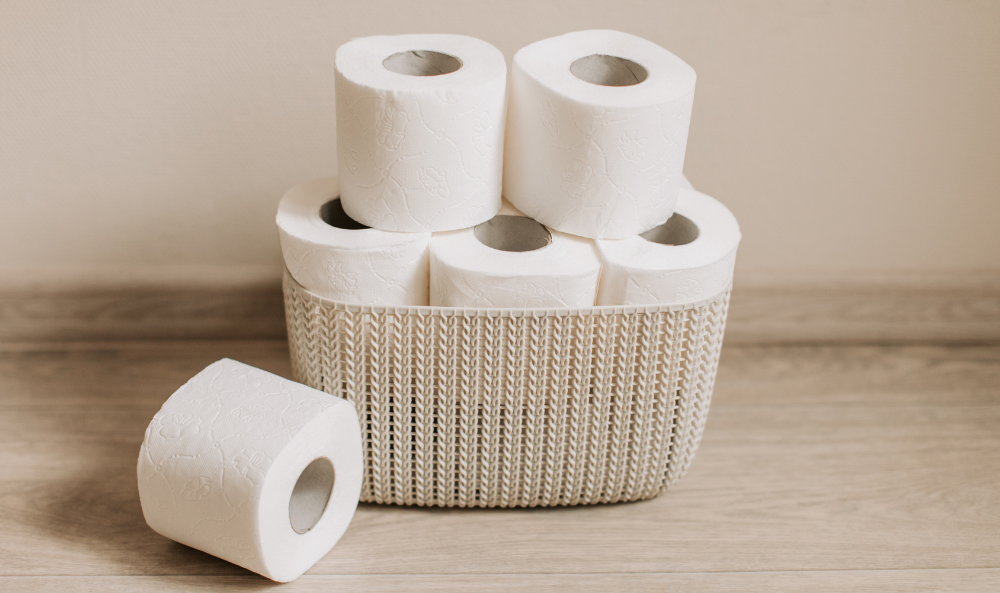Urinary Incontinence
Move Better. Live Fuller. Your Wellness Journey Starts Here.
Schedule a FREE Discovery Call!
What Is Urinary Incontinence?
If you’ve ever experienced any amount of bladder leakage (even just a drop), you may be one of the millions of people who have urinary incontinence. This even includes occasional or small occurrences, in which only a drop or two comes out when you sneeze or cough.
Or, perhaps it has become a more frequent or extreme inconvenience that causes you to wear a pad while you workout…or even an adult diaper because you are losing such large volumes of urine while walking or lifting.
Although these experiences are very common, they are actually not normal—despite what so many friends and medical providers say.

You may be surprised to know that no matter the degree or severity, these problems are very treatable! Contrary to popular belief, you don’t have to deal with leakage forever, or accept it as “a part of life.” Seeking treatment can help you get to the root of the problem, and reduce your need for medications, special underwear, or similar temporary solutions.
Urinary incontinence (or bladder incontinence) is an involuntary loss of control of urine, which can heavily impact an individual’s quality of life. It is a symptom that can affect anyone, regardless of their sex. The severity of this condition can vary widely, from small leakages to sudden, uncontrollable urges where you may not make it to the restroom in time. There are actually a few different types of urinary incontinence, and understanding these various types can help you better identify and categorize your own experiences:
Stress Urinary Incontinence (SUI)
- Leakage when pressure is exerted on the bladder from coughing, sneezing, laughing, or exercising.
Urge Urinary Incontinence (UUI)
- A sudden and intense urge to urinate, which you are unable to defer and is followed by involuntary loss of urine.
- In certain instances could also be known as Overactive Bladder (OAB).
- Symptoms can include frequent urination, and/or a need to urinate again shortly after using the bathroom.
- Getting up more than once per night to urinate.
Mixed Urinary Incontinence
- A combination of more than one type of incontinence, most commonly stress and urge incontinence.
Overflow Incontinence
- Leakage that occurs when the quantity of urine stored in the bladder exceeds its capacity.
- Symptoms can include frequent or constant dribbling of urine, due either to a bladder that doesn’t empty completely or because the person is deferring the urge longer than they should.
- The urine stream may be weak.
Functional Incontinence
- This refers to urine leakage that occurs due to various types of barriers. One example of a barrier could include the physical inability to access the bathroom because it is not properly set up for the person’s needs.
- This can be caused by other underlying conditions or problems.
What Causes Urinary Incontinence?
Urinary incontinence is more of a symptom than a condition, as it can often be attributed to various underlying conditions and lifestyle factors. In general, many forms of incontinence can be attributed to the following:
Aging
- Muscles in the body weaken with age, including muscles of the bladder, urethra, pelvic floor, hips, and back.
- Skin tissue changes due to menopause.
- Increased prostate size.
Smoking
- Smoking long-term can lead to coughing spasms, which increases the risk of stress incontinence. Additionally, smoking is a bladder irritant which can lead to urge incontinence.
Diet and Fluid Intake
- Certain foods and beverages like caffeine, alcohol, and spicy foods can irritate the bladder and lead to urgency.
Some causes of urinary incontinence can vary depending on the type. Understanding the type of incontinence you personally experience, as well as its possible causes, is important so that you can receive the correct treatment. This is because treatment will vary based on the causes of your incontinence. With that being said, let’s look at some common causes of urinary incontinence for each type:
Stress Urinary Incontinence (SUI)
- Weak, tight, inflexible, and poorly coordinated pelvic floor muscles; often due to childbirth, surgery, or aging.
- Increased abdominal pressure: From coughing, sneezing, laughing, exercising, or lifting heavy objects.
- Hormonal changes: Especially during menopause, which can affect tissue integrity.
- Prostate surgery: Particularly after a prostatectomy.
Urge Urinary Incontinence (UUI)
- Neurological disorders: Can include Parkinson’s disease, multiple sclerosis, or stroke, which can interfere with nerve signals involved in bladder control.
- Poorly coordinated pelvic floor muscles.
- Lifestyle choices: Improper fluid consumption, consuming dietary bladder irritants, not stopping fluids a certain amount of time before bed, deferring the urge to urinate for too long.
- Bladder abnormalities: Such as tumors or stones.
- Diabetes: May lead to increased urine production and contribute to symptoms of incontinence.
Overflow Incontinence
- Bladder obstruction: Such as from an enlarged prostate, urinary stones, or tumors.
- Nerve damage: Bladder control can be affected by diabetes, spinal cord injuries, or other health conditions.
- Weak bladder muscles: May result from damage or long-term inactivity.
Functional Incontinence
- Physical impairment: Arthritis or other mobility issues can make it difficult to reach the toilet in time.
- Mental impairment: Dementia and other conditions may lead to a lack of awareness or inability to express the need to urinate.
Mixed Incontinence
- A combination of causes from both stress and urge urinary incontinence.
Physical Therapy for Urinary Incontinence
As mentioned before, treatment will vary depending on your personal symptoms and type of incontinence. In many cases, physical therapy is a fantastic option for treatment that can help reduce the necessity of medications or surgery.
More specifically, pelvic floor physical therapy can help you regain control of your bladder by focusing on your pelvic floor muscles, which control your ability to urinate (and many other activities). Oftentimes, urinary incontinence can be attributed to a dysfunction of the pelvic floor.
A pelvic floor therapist can help you better understand this incredibly important part of your body and guide you through treatments, exercises, and lifestyle suggestions to help you regain control. While many sources may recommend kegels as the end-all solution for urinary incontinence, it is important to know that not every person’s pelvic floor dysfunction is the same, and performing exercises at random can worsen your symptoms.
After all, there are multiple types of urinary incontinence, which can stem from different causes. Therefore, seeing a professional and gaining their recommendations for your specific case is incredibly important, and the best way to see real results!
A physical therapist can treat urinary incontinence not just by helping you gain better control over your pelvic floor, but also by helping you identify habits that may be contributing to your symptoms. They can suggest modifications to fix these issues, which can help in preventing future complications! Additionally, they can offer pain-relieving treatments to make your symptoms more manageable if needed.
Some more treatment methods you may receive with Hive Physical Therapy and Wellness for incontinence include:
- Dry needling
- Cupping
- Manual therapy
- Electrical muscle stimulation
- Exercise prescription
- Behavioral modifications
- Neuromuscular re-education
- Biofeedback
- Therapeutic activity
If you’ve ever experienced any amount of bladder leakage (even just a drop), you may be one of the millions of people who have urinary incontinence. This even includes occasional or small occurrences, in which only a drop or two comes out when you sneeze or cough.
Or, perhaps it has become a more frequent or extreme inconvenience that causes you to wear a pad while you workout…or even an adult diaper because you are losing such large volumes of urine while walking or lifting.
Although these experiences are very common, they are actually not normal—despite what so many friends and medical providers say. You may be surprised to know that no matter the degree or severity, these problems are very treatable!
Contrary to popular belief, you don’t have to deal with leakage forever, or accept it as “a part of life.” Seeking treatment can help you get to the root of the problem, and reduce your need for medications, special underwear, or similar temporary solutions.
Urinary incontinence (or bladder incontinence) is an involuntary loss of control of urine, which can heavily impact an individual’s quality of life. It is a symptom that can affect anyone, regardless of their sex.
The severity of this condition can vary widely, from small leakages to sudden, uncontrollable urges where you may not make it to the restroom in time.
There are actually a few different types of urinary incontinence, and understanding these various types can help you better identify and categorize your own experiences:
Stress Urinary Incontinence (SUI)
- Leakage when pressure is exerted on the bladder from coughing, sneezing, laughing, or exercising.
Urge Urinary Incontinence (UUI)
- A sudden and intense urge to urinate, which you are unable to defer and is followed by involuntary loss of urine.
- In certain instances could also be known as Overactive Bladder (OAB).
- Symptoms can include frequent urination, and/or a need to urinate again shortly after using the bathroom.
- Getting up more than once per night to urinate.
Mixed Urinary Incontinence
- A combination of more than one type of incontinence, most commonly stress and urge incontinence.
Overflow Incontinence
- Leakage that occurs when the quantity of urine stored in the bladder exceeds its capacity.
- Symptoms can include frequent or constant dribbling of urine, due either to a bladder that doesn’t empty completely or because the person is deferring the urge longer than they should.
- The urine stream may be weak.
Functional Incontinence
- This refers to urine leakage that occurs due to various types of barriers. One example of a barrier could include the physical inability to access the bathroom because it is not properly set up for the person’s needs.
- This can be caused by other underlying conditions or problems.
Urinary incontinence is more of a symptom than a condition, as it can often be attributed to various underlying conditions and lifestyle factors. In general, many forms of incontinence can be attributed to the following:
Aging
- Muscles in the body weaken with age, including muscles of the bladder, urethra, pelvic floor, hips, and back.
- Skin tissue changes due to menopause.
- Increased prostate size.
Smoking
- Smoking long-term can lead to coughing spasms, which increases the risk of stress incontinence. Additionally, smoking is a bladder irritant which can lead to urge incontinence.
Diet and Fluid Intake
- Certain foods and beverages like caffeine, alcohol, and spicy foods can irritate the bladder and lead to urgency.
Some causes of urinary incontinence can vary depending on the type. Understanding the type of incontinence you personally experience, as well as its possible causes, is important so that you can receive the correct treatment.
This is because treatment will vary based on the causes of your incontinence. With that being said, let’s look at some common causes of urinary incontinence for each type:
Stress Urinary Incontinence (SUI)
- Weak, tight, inflexible, and poorly coordinated pelvic floor muscles; often due to childbirth, surgery, or aging.
- Increased abdominal pressure: From coughing, sneezing, laughing, exercising, or lifting heavy objects.
- Hormonal changes: Especially during menopause, which can affect tissue integrity.
- Prostate surgery: Particularly after a prostatectomy.
Urge Urinary Incontinence (UUI)
- Neurological disorders: Can include Parkinson’s disease, multiple sclerosis, or stroke, which can interfere with nerve signals involved in bladder control.
- Poorly coordinated pelvic floor muscles.
- Lifestyle choices: Improper fluid consumption, consuming dietary bladder irritants, not stopping fluids a certain amount of time before bed, deferring the urge to urinate for too long.
- Bladder abnormalities: Such as tumors or stones.
- Diabetes: May lead to increased urine production and contribute to symptoms of incontinence.
Overflow Incontinence
- Bladder obstruction: Such as from an enlarged prostate, urinary stones, or tumors.
- Nerve damage: Bladder control can be affected by diabetes, spinal cord injuries, or other health conditions.
- Weak bladder muscles: May result from damage or long-term inactivity.
Functional Incontinence
- Physical impairment: Arthritis or other mobility issues can make it difficult to reach the toilet in time.
- Mental impairment: Dementia and other conditions may lead to a lack of awareness or inability to express the need to urinate.
Mixed Incontinence
- A combination of causes from both stress and urge urinary incontinence.
As mentioned before, treatment will vary depending on your personal symptoms and type of incontinence. In many cases, physical therapy is a fantastic option for treatment that can help reduce the necessity of medications or surgery.
More specifically, pelvic floor physical therapy can help you regain control of your bladder by focusing on your pelvic floor muscles, which control your ability to urinate (and many other activities).
Oftentimes, urinary incontinence can be attributed to a dysfunction of the pelvic floor.
A pelvic floor therapist can help you better understand this incredibly important part of your body and guide you through treatments, exercises, and lifestyle suggestions to help you regain control.
While many sources may recommend kegels as the end-all solution for urinary incontinence, it is important to know that not every person’s pelvic floor dysfunction is the same, and performing exercises at random can worsen your symptoms.
After all, there are multiple types of urinary incontinence, which can stem from different causes. Therefore, seeing a professional and gaining their recommendations for your specific case is incredibly important, and the best way to see real results!
A physical therapist can treat urinary incontinence not just by helping you gain better control over your pelvic floor, but also by helping you identify habits that may be contributing to your symptoms.
They can suggest modifications to fix these issues, which can help in preventing future complications! Additionally, they can offer pain-relieving treatments to make your symptoms more manageable if needed.
Some more treatment methods you may receive with Hive Physical Therapy and Wellness for incontinence include:
- Dry needling
- Cupping
- Manual therapy
- Electrical muscle stimulation
- Exercise prescription
- Behavioral modifications
- Neuromuscular re-education
- Biofeedback
- Therapeutic activity
You can learn more about these treatments on our Treatments Page.





